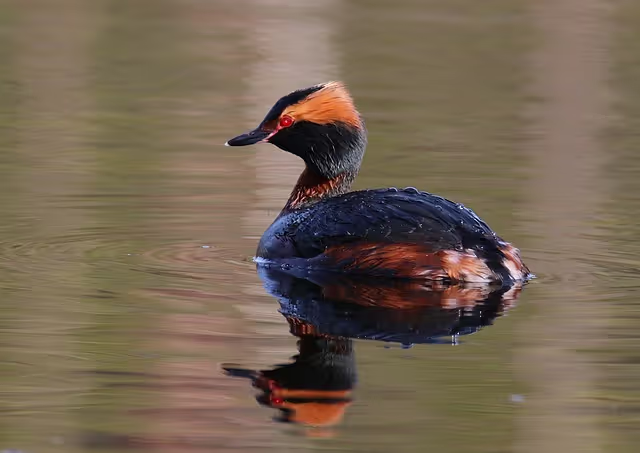The Horned Grebe



On the surface, the Horned Grebe seems like one tough duck. The reason that you might think that is because the species spends its summers in lakes and ponds that have both marsh vegetation and open water. However, it spends the cold and stormy winter months along the oceans, including on exposed shorelines. With that said, it will seek out the safety of a protected bay when one is available. So why does the Horned Grebe spend the winter along the ocean? The answer is that, it must patter across the water to become airborne. If the water is frozen, it can't patter. Therefore, it can become trapped in icy cold waters. While the lakes and ponds here in Western Washington don't generally freeze over, and would be safer places for Horned Grebes in the winter, the species seems to know that there are many other places where the lakes and ponds do freeze during the winter, and generally avoids them. With that said, in recent years, some Horned Grebes have been spending the winter in large lakes and reservoirs, so the species may be adapting to recognize that not all lakes freeze in the winter.
The scientific name for the Horned Grebe is Podiceps auritus. While it is believed that the species has been declining in recent years, there has been a lack of solid data to confirm this. Horned Grebes can be found along the oceans in North America primarily in the winter months. They typically spend the warmer months in Alaska and Canada. Horned Grebes can also be found in Eurasia, where they are known as Slavonian Grebes.
Horned Grebes mainly forage for food by diving from the water's surface and swimming underwater, propelled along by their feet. They also take items from the water's surface or above. They tend to forage alone, but some flocks will "forage cooperatively" on occasion. Sometimes, they will work with Surf Scoters, another species of duck that winters along the oceans and spends the summer months in Alaska and Canada. The Horned Grebe's diet mostly consists of fish, insects, and crustaceans, although this does vary by season and habitat, For example, in the summer, insects and crustaceans dominate their meals, but tadpoles, salamanders, leeches, and some fish also find their way to the Horned Grebe's dinner table. In the winter, fish are the Horned Grebe's main food source, but mollusks, insects, and crustaceans are also on the menu. In addition, like other species of Grebes, Horned Grebes swallow some of their own feathers. They do this to form a "matted plug" of them in their stomach. The plug serves as a filter, or may alternatively hold fish bones that are waiting to be digested. To help their chicks start building this plug early, Horned Grebe parents feed them feathers too.
When it comes time to build their nests, Horned Grebes choose sites that are in shallow water, usually among marsh growth. Both parents help to build the nest, which is made out of what The Audubon Society described as "a floating heap of wet plant material (with depression in middle for {the} eggs)" that is normally secured to standing vegetation. Horned Grebes lay anywhere from three to seven eggs. The eggs are whitish to pale green in color. Both male and female Horned Grebes incubate the eggs, a process that takes anywhere from twenty-two to twenty-five days. Once the chicks hatch, they are fed by both parents, and often spend time riding on their parent's backs, sitting between the wings. Additionally, Howard Grebe chicks can swim shortly after hatching, and, as a result, may even join their parents underwater during dives. They make their first flights when they are just fifty-five to sixty days old.
The Horned Grebe is most familiar to bird watchers in North America in its black and white winter feathers. However, in the summer, the feathers become black and red. Additionally, Horned Grebes have "horns", which are yellowish patches of feathers behind their eyes that can be raised and lowered at will. Horned Grebes are small water birds, with small heads and short, thin bills. In the winter, their cheeks turn white, In the summer, their cheeks are black. They range in length from 12.2 to 15 inches (31 to 38 centimeters), and weigh anywhere from 10.6 to 20.1 oz ounces (300 to 570 grams). They have a wingspan of 17.3 to 18.1 inches (44 to 46 centimeters).
References
© Ian D. Caldwell, November 2020
Touch whale bones, examine shipwreck artifacts and connect with the coast's living history.

Support our mission, get involved in educational programs, or contribute through donations and volunteering.